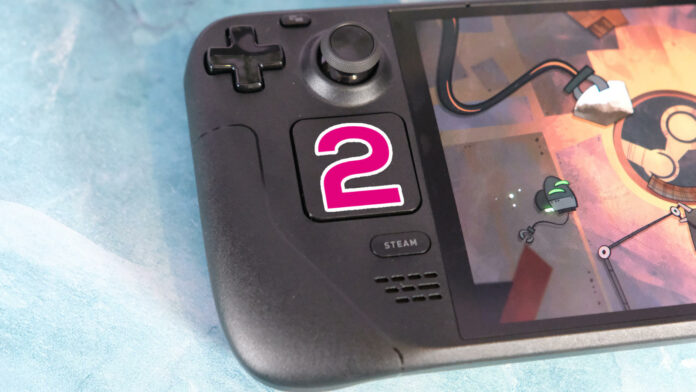Steam Deck 2 is a while away according to Valve, but a new leak has everyone whipped into a frenzy. Without even questioning the authenticity of the specs, however, I’ve had enough. I don’t want the biggest, beefiest gaming handheld on the planet. I just want a solid portable PC that doesn’t die halfway through a train journey.
The leak
To recap, an enigmatic message appeared on Chinese tech forum Chiphell, hinting what Valve’s sequel device might include. Reportedly aiming for a late 2026 launch, the leak says it’ll feature an OLED screen at 900p resolution and 90Hz refresh rate. This is a bump up from 1,280 x 800 on Steam Deck OLED, but still below Lenovo Legion Go’s 2,560 x 1,600 display at 144Hz.
The rest of user Wjm47196’s leak is a little more cryptic. Just look at the Google translation for yourself (edited for punctuation and readability):
“Custom Ferrari engine 6-cylinder fourth-generation gasoline engine + 160 horsepower motor (remember to divide by 10 Oh). The supply is 8,533 gasoline 26, Q3-Q4 released. The price should increase a lot. The existing model will continue to be sold as a low configuration.”
Deciphering this, it indicates Steam Deck 2 is powered by a six-core AMD Zen 4 APU with 16 CUs and 8,533MHz RAM. As NotebookCheck points out, this is likely Hawk Point’s 4C (Zen 4) + 2c (Zen 4c) setup with LPDDR5X memory. At this point, we don’t know just how much RAM it’ll feature, but that it’ll likely be pricey.
It might not sound like a monumental leap from where we are but remember that current Steam Decks run AMD Zen 2. Jumping two generations ahead could give it a performance boost in terms of both frame rate and efficiency. As always, take this with a pinch of salt since it might not be legit. Even if it is, it’s so early in the pipeline that things could change between now and late 2026.
Usability
You can’t expect everything from a sketchy leak, but there are a few missing things. I’m more interested in hearing about battery capacity, overall weight, and OS improvements. After all, you can pack this with the best screen, APU, and RAM but go too far and you’ll make it heavy, hard to hold, and only get a couple of hours out of it. You only need to look at the weight of Lenovo Legion Go and battery life of Asus ROG Ally to see the compromises for yourself.
Credit where it’s due, Steam Deck is already the most usable gaming handheld on the market. SteamOS is easy to navigate with a distinct handheld mode separate from desktop. It features a TDP power slider at the click of no more than two buttons, letting you scale performance and battery life.
Steam Deck OLED overhauls even made the handheld last longer. Its focus on a newer, more efficient APU process (6nm instead of 7nm) revitalised my love of portables. After all, Valve understands that all the fps in the world does you no good if you can’t actually play for very long. This alone gives me faith that the brand knows what it’s doing with Steam Deck 2.

